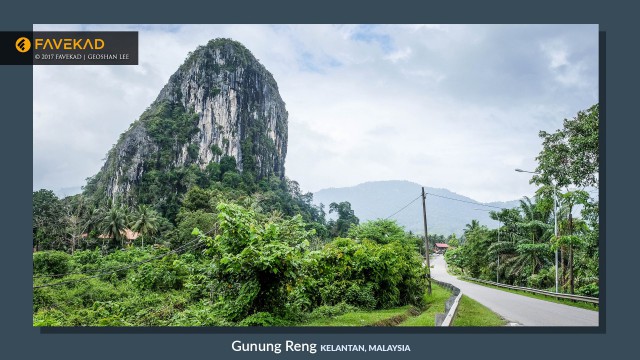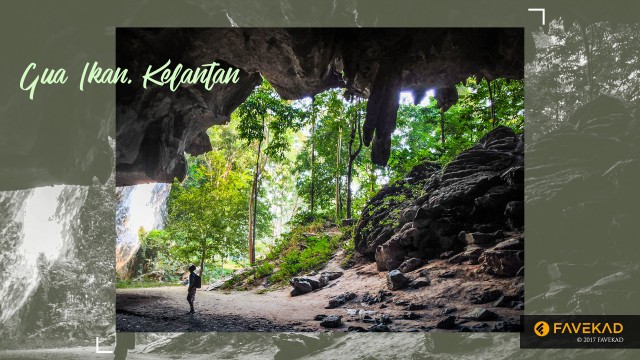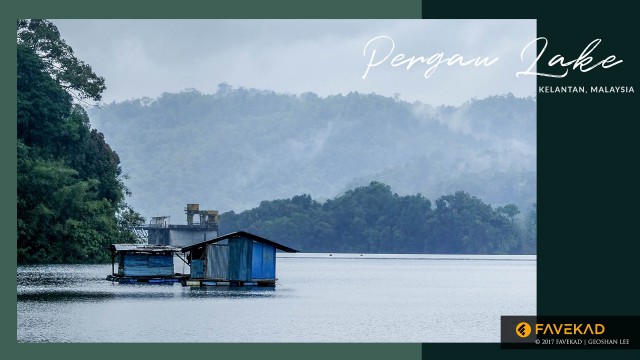
Kelantan - a little of everything
Kelantan is an agrarian society, dominated by rice, rubber and tobacco as well as fishing. However, there are also cottage industries producing traditional handicrafts, such as batik, songket and wood carving. Kelantan is also rich in history and culture as archaeological evidences show that there were human settlements in prehistoric times. The state’s physical properties – highlands, plains, coastal areas – contribute to the attractiveness of Kelantan.
Share
When you mention Kelantan to someone in Malaysia, the first thing that comes to his mind is, a Muslim state, then an agrarian state. Well, all these are not wrong. Indeed Kelantan is a Muslim state, with 97 percent of its population being Muslim and its large number of mosques. Kelantan is also an agrarian society, dominated by rice, rubber and tobacco as well as fishing. However, there are also cottage industries producing traditional handicrafts, such as batik, songket and wood carving.
Kelantan is also rich in history and culture as archaeological evidences show that there were human settlements in prehistoric times. The state’s physical properties – highlands, plains, coastal areas – contribute to the attractiveness of Kelantan.
Kuala Koh National Park
The Kuala Koh National Park is also known as the Kelantan National Park. The park is located at Kuala Koh, Gua Musang. It is actually located in the locality of Bukit Hantu Forest Reserve and Lebir Forest Reserve, quite far from any towns or villages. It is the entrance to the National Park from Kelantan. The environment at Kuala Koh National Park is more tranquil than the more commercialised part in Pahang at Kuala Tahan.
There are several attractions in this national park. As the park is bestowed with a variety of flora and fauna, it is a photographer’s paradise. A place rich in flora is also as sanctuary for birds. The birds that can be found at the park are white-rumped shama, rhinoceros hornbill, great argus, helmeted hornbill and greater racket-tailed drongo. Hence, it is also a haven for bird watchers.
The park offers some great fishing spots for fishing enthusiasts. The spots include Lubok Sinar, Lubok Kedah, Lubok Kaloi Bawah, Lubok Kaloi Atas, Lubok Jengal, Lubok Pintu Raya and Lubok Kem Besu. Of course, most of the visitors would rather go jungle trekking and the most popular trails in the park are the Ara and Sinar trails. Most of these trails take less than three hours to complete while the longest trail is the Kuala Pertang trail.
There are several facilities already in place at the national park. Other than the camping site, there are chalets, a hostel, a restaurant as well as meeting room for the purpose of team building and meeting. Additionally, there are also boats for rent. As such, other than bird-watching, fishing, hiking and photography, visitors to the park can go for a canopy walk above the tropical rainforest, bamboo rafting and tubing. It is also quite common to see a herd of elephants, leeches and insects.

Send this ecard to your loved ones and friends
Gunung Reng
Gunung Reng is situated along the East-West Highway in the Jeli District, on the western part of Kelantan. Gunung Reng is a limestone outcrop that is located between the Jeli and Belimbang towns.
At the foot of Gunung Reng is a children’s playground, a mosque and some shops and stalls.
According to folklore, there used to be a village on the exact spot of Gunung Reng. The village was called Kampung Tok Tala. More than a thousand years ago, the villagers were feasting and celebrating for seven days and seven nights. At the height of this celebration, an animal fight, where a dog was pitted against a cat was held. The fight was held on the roofs of the houses in the afternoon during the Zohor prayer time.
As a punishment for cruelty to animals, the sky opened up and started pouring rain. In the midst of the storm, a nearby mountain was blown off and dropped on top of the village. Hence the village and its people were buried beneath this mountain. The mountain remains till this day and is known as Gunung Reng.
The original site of the mountain is a pond now. The mountain is named after the river nearby. There are several caves in this mountain, namely Gua Bedak, Gua Payong, Gua Kaca, Gua Rimau and Gua Batak. These caves are linked to each other and the main entrance to all these caves is Gua Payong.
There were also stories about Gunung Reng being the home of Puteri Sa’adong, the queen of Kelantan from 1663 to 1667, who was also the adopted daughter of the legendary Siti Wan Kembang, a descendent of the Champa-Kelantan-Pattani royalty who ruled Kelantan in the 17th century.

Send this ecard to your loved ones and friends
Gua Ikan
Gua Ikan or Fish Cave is a limestone cave complex at Bukit Batu Kapur, not far from the Gunung Stong State Park. It is situated in Kampung Slow Pak Long, about seven kilometres from Dabong, a small town, south of Kuala Krai. There are several caves in the Gua Ikan complex.
The cave is named Gua Ikan because the limestone hill where the caves are located resembles the shape of a fish. Some people also claimed that it is named as such because of the fishes in the stream that flows inside it.
The various caves inside the Gua Ikan cave complex are Gua Keris where a stalactite column resembles a keris and Gua Pagar, which entrance is so small that visitors have to crawl through a tunnel to get in. Other caves include Gua Gelap, Gua Batu Susun, Gua Tembakau, Gua Puteri and Gua Setol. All these caves have the similar features of other caves in Malaysia, which include underground chambers, flowstone and cave curtains.
Gua Keris is distinct from the other caves because of its unique features. Other than the stalactite column that resembles a keris, this cave opening bears a resemblance to the map of Kelantan. The opening also allows light to shine through during certain time of the day. The locals call this phenomenon, “God Light”. The karst formation in this cave results in cave curtains that sparkle when light shines on it.

Send this ecard to your loved ones and friends
Tasik Pergau
Tasik Pergau is a manmade lake for the purpose of hydro-electricity generation. It is situated near to the Grik-Jeli highway, about 18 kilometres from Jeli town.
The hydro-electricity project is part of the Pergau Dam project that began construction in 1994 and completed in 2000. The dam began operation in 2003. This project took up a total land area of 460 hectares.
Pergau Lake, which is also known as Pergau Lake Sanctuary Park covers an area of 57 square kilometres, about 720 metres above sea level. The lake is about 15 to 18 metres deep.
The lake is surrounded by lush green tropical rainforest and the temperature could drop to as low as 18 degrees Celsius at night. The lake is mostly covered with mist in the morning. The area surrounding the lake boasts an abundance flora and fauna. A lucky visitor could chance upon some wild animals running along the bank or drinking water from the lake. As such, the natural assets of this lake draw visitors not only from Kelantan and other states in Malaysia but also from the neighbouring Thailand and Singapore.
Visitors to Lake Pergau can stay overnight at the resort, which offers floating chalets. They can go jungle trekking where they will come across interesting flora and fauna. As for anglers, the lake is definitely a haven for them as there is a variety of fresh water fish species in the lake.
In 2016, the Sultan of Kelantan declared Tasik Pergau as an eco-system protection park.

Send this ecard to your loved ones and friends
Construction of the Guillemard Railway Bridge
The Guillemard Railway Bridge is a truss bridge that crosses the Kelantan River to connect Paloh Rawa in Machang to Kusial in Tanah Merah. It is one of the oldest railway bridges in the country and was used by both trains and other land vehicles.
The Guillemard Railway Bridge is 600 metres in length and is believed to be the longest railway bridge in the country. It is made of black solid steel.
The bridge was constructed between 1920 and 1924. It took slightly more than four years to complete. It was constructed by an England-based company. The bridge was officially opened by the Sultan of Kelantan in 1925 and it is named after the British Governor for the Straits Settlements, Sir Laurence Guillemard.
When the Japanese invaded Kelantan in December 1941 during World War 2, the British forces had to destroy the last span of this bridge in their endeavour to prevent the Imperial Japanese Army from advancing further.
The bridge was left as it was and remained impassable even after the war. In 1948, reconstruction of this bridge took place and was reopened to traffic on September 7. The bridge served both the railway as well as other land vehicles until February 1988 when a new bridge was opened not far from it. The new bridge is known as the Jambatan Tanah Merah, along the East-West Highway. Today, the Guillemard Bridge is solely a railway bridge. Nevertheless, it is a vital link for the East Coast train line by KTMB from Gemas to Tumpat.

Send this ecard to your loved ones and friends
Shadow Play
Shadow play is also known as shadow puppetry or wayang kulit in the Malay language. It is an ancient form of entertainment by using cut-out figures, held between a light source and a screen to tell stories. In this case, a talented puppeteer makes the figures alive – talk, laugh and move.
Shadow play exists in many cultures around the world. In fact, many countries are known to have their shadow play troupes. In Southeast Asia, shadow play is an old tradition, especially in Malaysia, Indonesia, Thailand and Cambodia. In fact, evidences of shadow puppetry are found in both ancient China and India too.
Most of the time, the puppeteer holds the puppets close to the screen that is lit from behind. He narrates the story, which is often presented through a song. The limbs of the puppets can be controlled using canes that are attached to them.
In Malaysia, shadow play or wayang kulit that is played in the southern part of Peninsular Malaysia, especially Johor, is influenced by the Javanese Indonesian shadow play. In the northern region, particularly Kelantan, the wayang kulit is influenced by the Thai shadow puppets. However, the Javanese wayang kulit is also available in Kelantan.
The reason why it is called wayang kulit is because the puppets are made of skin or leather (kulit). The puppets are controlled using sticks or buffalo horn handles. The light source is normally an oil lamp although a halogen light is used today. The stories that are presented are usually mythical but provide educational moral. The story is accompanied by gamelan music. The gamelan ensemble includes a pair of double-headed drums (gendang), a pair of single-headed goblet-shaped drums (gedumbak), a pair of vertically standing drums (geduk), a pair of cymbals (kesi), a pair of inverted gongs (canang) and a pair of hanging knobbed gongs (tetawak).
The wayang kulit performance normally begins when it is dark. The puppeteer (or Tok Dalang) sits behind the white screen, which is normally made of white cloth. A large banana tree trunk lies between him and the screen. The banana tree trunk is used to make the puppets stand on their own, by jabbing the stick that holds the puppet into the trunk.
The Tok Dalang introduces the characters in the story at the beginning of the performance as well as gives an overview of the story. Most of the time, the stories evolve around battles. If it is a long story, the performance can go on till dawn.
It is believed that the stories date back to the two Hindu epics of the Ramayana and the Mahabharata. Nevertheless, the plays have been modified to suit the present community.

Send this ecard to your loved ones and friends
Click below for our full collection of Kelantan ecards.